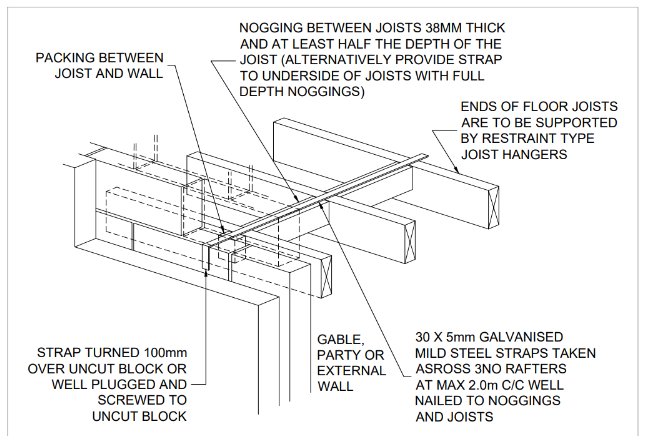Loft floor joists play a pivotal role in the structural integrity of a building. These horizontal members span open spaces, often between beams, and transfer loads to vertical members. When incorporated into a floor framing system, they provide stiffness to the subfloor sheathing, enabling it to function as a horizontal diaphragm.
Understanding the intricacies of loft floor joists is essential for architects, builders, and homeowners alike. This guide delves deep into the world of loft floor joists, shedding light on their significance, types, and the calculations involved.
What is a Loft Floor Joist?
A joist is a horizontal structural member utilized in framing to span an open space. They are often positioned between beams that subsequently transfer loads to vertical members. In a floor framing system, joists offer stiffness to the subfloor sheathing. They can be made of wood, engineered wood, or steel, each with its unique characteristics.
For instance, wood joists typically have a plank-like cross-section with longer faces positioned vertically. In contrast, engineered wood joists might resemble the Roman capital letter “I” and are referred to as I-joists. Steel joists can adopt various shapes, resembling Roman capital letters like “C”, “I”, “L”, and “S”.
Loft Floor Joist Strength and Stability
The strength of joists is paramount. They must support the anticipated load over an extended period. The depth of the joist is crucial in establishing a safe and stable floor or ceiling system. The wider the spacing between the joists, the deeper they need to be to limit stress and deflection under load. Lateral support, known as dwang or blocking, enhances its stability, preventing buckling under load. A common rule of thumb for wooden floor joist depth in residential properties is to take half the span in feet, add two, and use the resulting number as the depth in inches.
Types of Joists
There are various types of joists, including:
- Single Floor Joists: These carry both a floor and ceiling.
- Double Floor Joists: These have two sets, one for the floor and another for the ceiling.
- Binding Joists: These run perpendicular to the ridge of a gable roof and join to intermediate posts.
- Ceiling Joists: These may be installed flush with the bottom of a beam or sometimes below it.
Structural Considerations for Loft Floor Joists
When planning a loft conversion, it’s essential to understand the structural elements involved. The loft floor is a primary component, and its design must be robust enough to handle both dead and imposed loads. This is where the expertise of Sussex Structural Engineers comes into play.
- Dead Load: This refers to the weight of all the materials that physically form the floor. For our example, we’ll consider a dead load of 0.5kN/m^2. This load also accounts for the existing timber ceiling joist/truss chord.
- Imposed Load: This is the additional weight the floor is expected to support, such as furniture, people, and other movable items. A typical imposed load for habitable purposes is 1.5kN/m^2.
At Sussex Structural Engineers, we prioritize precision and timeliness. Our structural calculations and adherence to building regulations are guaranteed within a 10-business-day window. And if you’re scouting for a builder, our trusted contractors are ready to assist, backed by comprehensive indemnity insurance. Engage with the SSE team for a no-obligation quote today.
Existing Roof Structures and Their Limitations
Older roof structures, typically made of traditional ‘cut’ timber roofs, have timber joists tied to each pair of rafters. These joists act as ties to prevent the roof from spreading and also function as the ceiling. They are usually sized at 100mm x 37mm. Modern roofs, especially from the 1960s, are often factory-made gang-nailed trusses, with the ‘Fink’ truss being a popular pattern. The common section size for these trusses is 80mm x 37mm.
Given the structural inadequacies of these timber ceiling members to function as a floor, a robust floor deck must be designed and built.

Designing the New Floor Deck
The new floor deck must be designed to support both the dead and imposed loads. In some cases, the new floor deck is also designed to support the loading from the roof via the eaves partition above. This design approach can lead to larger timber sections to withstand the forces from the roof into the floor joists.
However, in about 90% of loft conversion projects, steel beams are inserted into the gables and/or party walls at or above the new floor deck level. These beams are designed to sit on steel bearing plates, providing a more robust support structure.
Calculating Joist Spans
The spans of the new floor joists are determined by applying the formulated and tabulated loads. All structural floor joists are calculated in accordance with BS 5268-2:2002. The stiffness for serviceability and comfort when walking, or deflections, are taken as L/0.003 MAX.
For timber grade specifications, the C24 grade is becoming more common due to its greater modulus of elasticity (10800N/mm^2) compared to the C16 grade (8800N/mm^2). C24 grade also has a higher bending stress of 7.5N/mm^2 compared to the C16 grade strength of 5.3N/mm^2. This means that by selecting C24 grade timber, greater floor joist spans can be achieved. For instance, a common design specification is a 47 x 225mm C24 grade member at 400mm CRS spanning 4900mm, which is typically sufficient for a new domestic loft floor for habitable purposes.
Connecting Joists to Supporting Beams
Joists can connect to their supporting beams in multiple ways. They can rest on top of the supporting beams, be tenoned in, or be slipped into mortises after the beams are in place. In platform framing, joists might connect to the rim joist with toenailing or using a joist hanger.
Final Thoughts
Understanding the structural calculations for loft floor joists is not just the realm of architects and builders. Homeowners, too, must be cognizant of the role these joists play in the structural integrity of a building. With expert guidance, especially from stalwarts like Sussex Structural Engineers, one can navigate the complex world of loft conversions with confidence and clarity.
